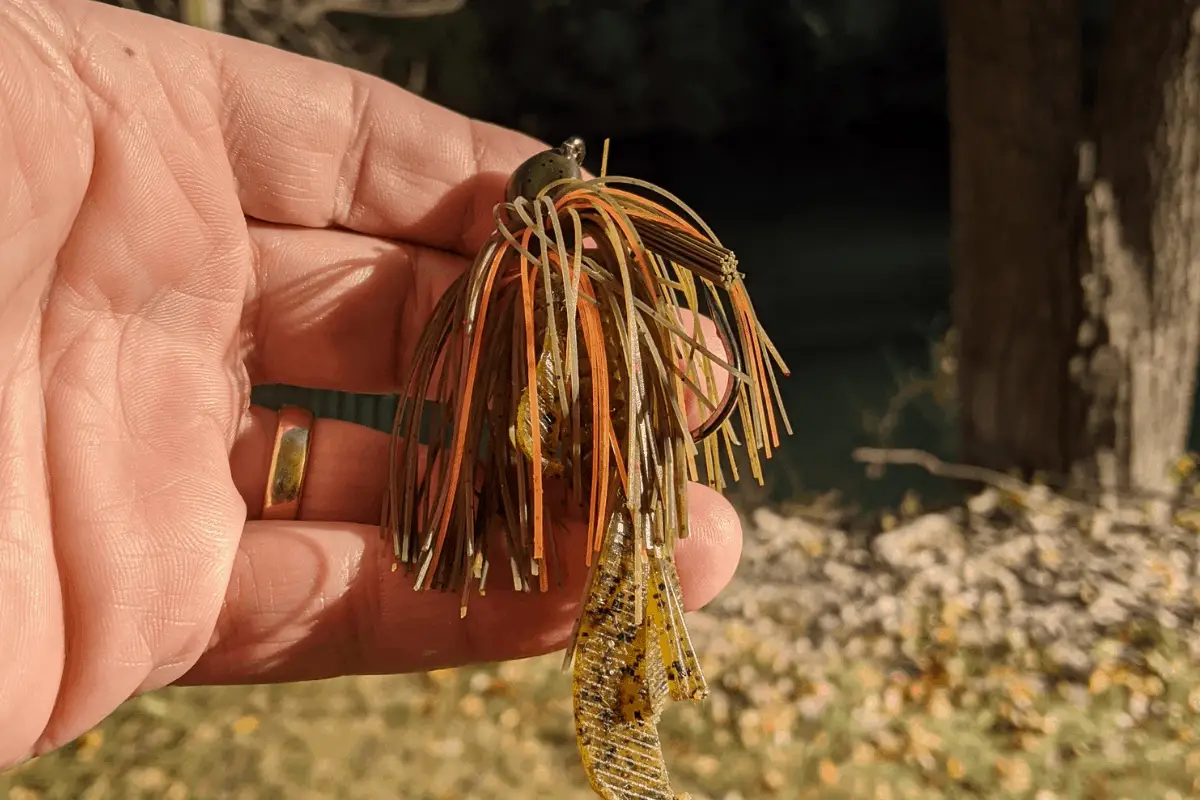There are certain lures that are known to get big bites. If I had to pick just one lure from the boat to catch a true lunker – what would it be?
Jigs are big bass baits. To catch big bass on a consistent basis, this popular lure can be divided into three categories: flipping jigs, skipping jigs, and swim jigs. Each of these baits have special characteristics that make them excellent tools for searching up and catching truly giant bass.
While any lure can land a monster bass at any given time, the jig has a history of getting it done when it matters most.
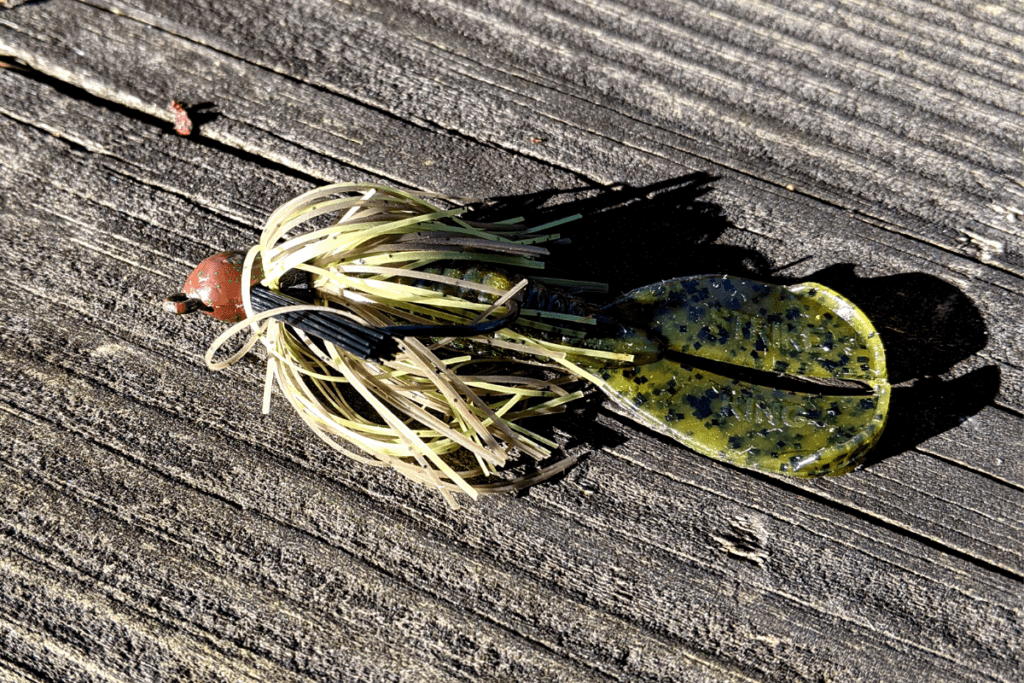
Flipping Jig
This may be the best lure that I know of for catching giant fish.
Why?
It is easy to put this bait in the places that big fish live. The design of a flipping jig makes it perfect for probing brush piles, working through laydown trees, punching into vegetation, and dragging along the rocky depths.
A flipping jig is most often fished in-and-around shallow cover, but it can be used for so much more.
The reason this lure is my number one choice is because of efficiency.
It excels at working both vertically and horizontally. With the proper trailer threaded onto the hook, a flipping jig can easily be converted to a modified swim jig.
It is rare that a single lure can work through the tangles of a brush pile and then be retrieved back to the boat with a steady and pulsing swimming presentation – but the jig can do just that.
The lure is one that can always be in the midst of a presentation. That makes it’s near 100% efficiency rating a must for anglers that are in the search for a personal best bass.
Plastic Trailers for Flipping Jigs
As mentioned above, I like to swim a flipping jig back to me when the vertical portion of the presentation is over.
Now, if I am ultra-shallow and super close to the cover, then there is not much room to swim the lure back, but if a longer cast is made and the boat is positioned a distance from the target, then a swimming retrieve in preparation for the next cast is a must.
To excel in the horizontal portion of the presentation I find that one-of-two trailers work the best for me – a twin-tail grub and a large craw.
Both of these plastic lures have two appendages that kick, swim, and displace enough water to cause a distinct vibration signature. This disturbance piques the curiosity of the bass and creates the possibility that the angler will feel a strike at any point in the presentation.
Adjusting the Size of a Jig Based on Water Clarity
Each angler has a favorite size, or weight, to start with. I am a huge fan of jigs in the ¼ oz size. I prefer the more subtle and compact silhouette this type of jig offers.
But, there are times when I need to size up.
As a general guideline, I like to go heavier in clearer water and lighter in water with some color to it. Bass are more likely to use their vision in clear water and they can also be quite picky on how “real” something looks.
A quicker drop creates a situation where a bass is more likely to react.
The slower fall rate is something I prefer in dirtier water. This helps the bass to zero in on the location of the lure by sensing the vibration. If the fall rate is too quick in dark water, the bass may lose track of it and give up.
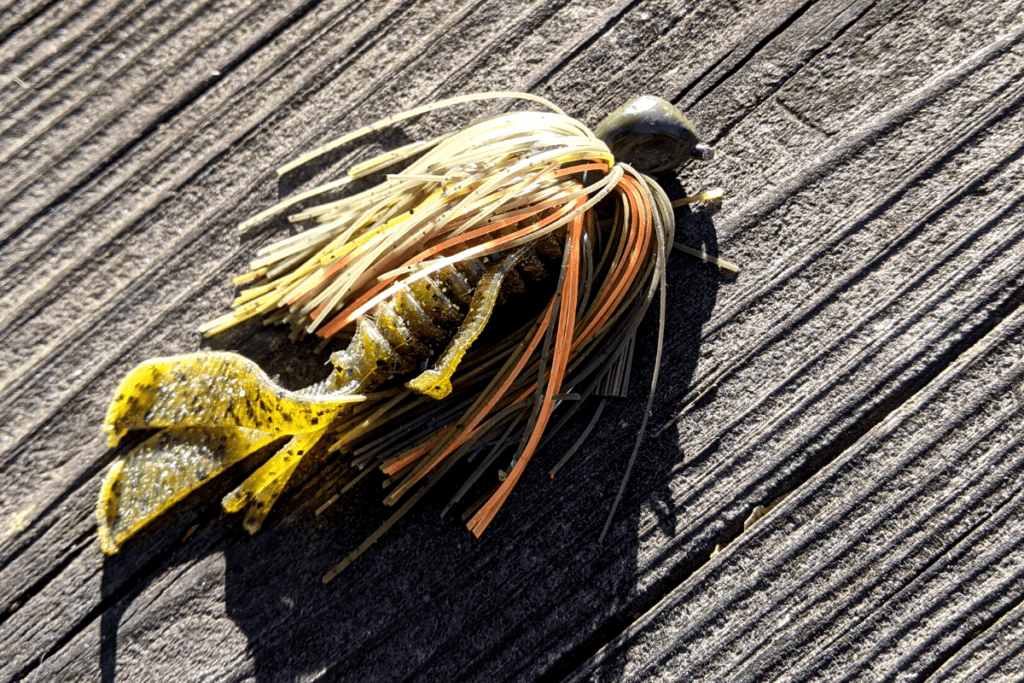
Skipping Jigs
While many styles of jigs can be skipped under overhanging cover, a true skipping jig is designed for this singular purpose.
Most skipping jigs on the market have a more distinct flat side to them. Like a skipping stone, this makes the lure more capable of sliding across the surface of the water and accurately land where the angler wants it to go.
Skipping jigs are usually at least a ½ oz in weight and also may be more compact.
The trailers that I use for skipping jigs are chosen to match the compact profile of the jig.
I prefer to use a plastic trailer having appendages that are close to the body and not overly long. This more compact design keeps the lure sliding into position much easier than if it had long appendices that would slow it down.
It is often best to cut the overall length of the plastic trailer to make it even more compact and easier to present.
Skipping Jigs Get Where the Big Fish Hide
Monster-sized bass excel at getting into areas where they feel safe and are surrounded by potential meals.
Sliding a jig under docks and overhanging brush gets to these fish.
There is also a good chance that you may be the only angler in the area that is taking the effort to present the bait to them. Skipping a jig can be intimidating to many folks and they avoid it.
Finding unpressured bass is a key component to unlocking the potential to catch a new personal best bass.
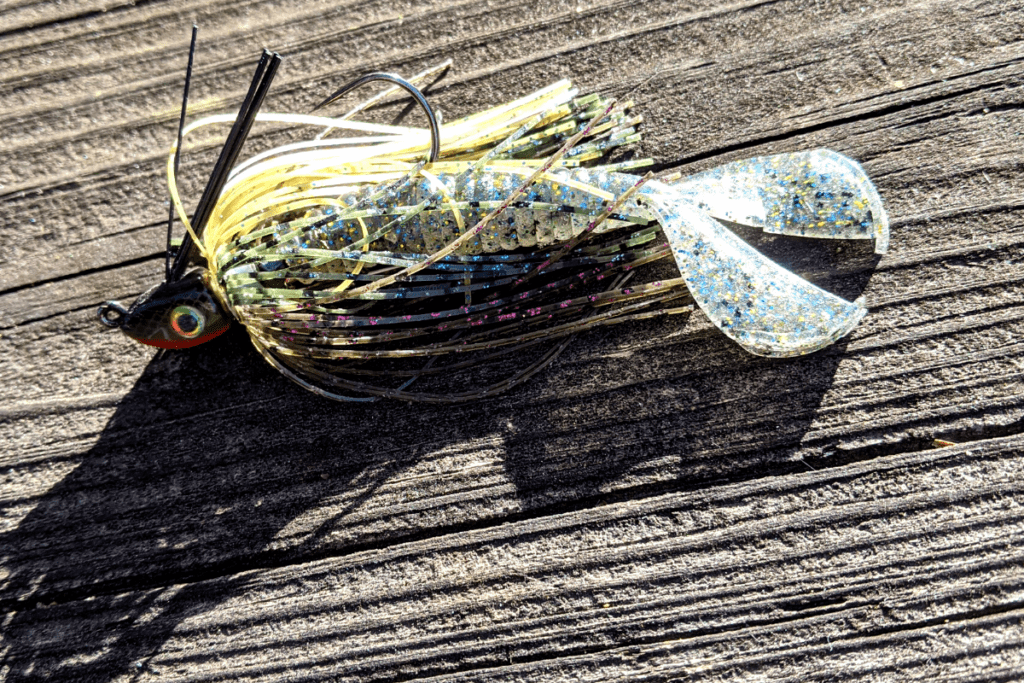
Swim Jigs
There was a few months when I fished a swim jig almost 100% of the time.
You may think I am crazy, but it worked and I landed many big bass with it.
A swim jig is a tool that not only can slide through vegetation with ease, but it also has the uncanny ability to call fish from a distance when brought through open water.
My favorite retrieve is to pulse the swim jig as I reel it slowly. I try to imagine a shad, minnow, or sunfish that is struggling to maintain its position in the water column. A sick or wounded baitfish is soon to be a meal for a hungry predator.
That feeding instinct is hard to turn off when a big bass sees an easy meal unable to escape.
I also believe that swim jigs pull fish from a distance in open water because bass tend to feed, or watch, up as opposed to down. A wounded bluegill swimming haphazardly will garner attention from all sorts of big fish.
Locating Bass Quickly with Swim Jigs
If I hit the water and need to try to decipher what the bass are doing, a swim jig is one of my favorite tools to do just that.
Even if the bass are not in the mood to annihilate a swim jig, which is rare, they will at least follow it out of their hiding places. This then allows me to adjust to another lure or technique if needed.
The swim jig is also my go-to search bait when I decide to cover a lot of water. There are times when putting the trolling motor down and working the shoreline is an effective strategy to find and catch active fish. A swim jig fills that demand perfectly.
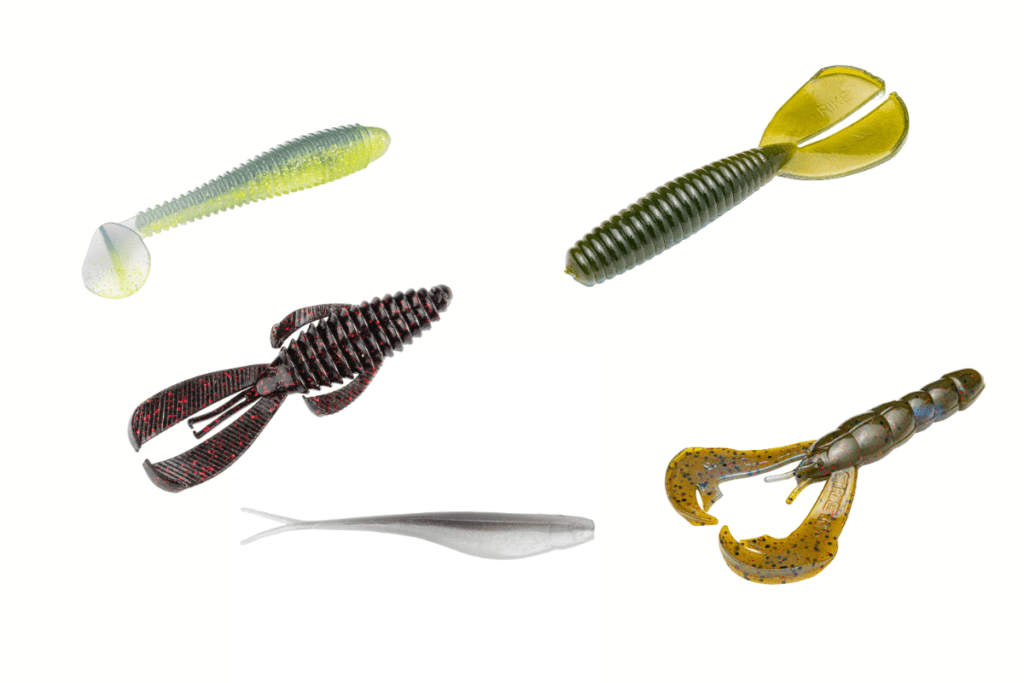
Swim Jig Trailers
As I have mentioned earlier, a twin-tail grub is my first choice for a swimming jig. It can be rigged either horizontally or vertically, depending on what you prefer.
Many anglers like to rig the grub vertically because it more closely mimics the natural position and shape of a tailfin.
Other popular soft plastic trailers for swim jigs include: single tail grubs, a paddletail swimbait, a straight tail swimbait, and craws.
The more stained and dirty the water the more likely I am to use a plastic trailer that is larger and puts off a bigger vibration signature. This action can be picked up by the lateral line on a bass and help them to target the potential prey.
Final Thoughts
The venerable jig is an angler’s best friend when it comes to catching big bass consistenly. Any lure can catch a monster bass, but some lures are better at it than others.
The ability to fish the entire water column and probe thick cover is what a jig excels at.
Shallow cover, deep cover, docks, rocks, rivers, lakes, or ponds – it doesn’t matter. Flipping, skipping, and swimming jigs are dynamite tools for upping the odds of you catching your next personal best bass.
Tight lines. Be safe and makes sure to go out and encourage someone today. You never know how you might change their life forever.
Isaiah 6:8
Recent Posts
There are few things that are more fun than watching a bass explode on a topwater lure. The wide diet of largemouth bass create lots of opportunities for anglers to mimic prey species. The Two...
Angler frustration can build when cast-after-cast is ruined by weeds and slime getting stuck on your lures. This reduces the amount of time your bait is working at its maximum efficiency and...

